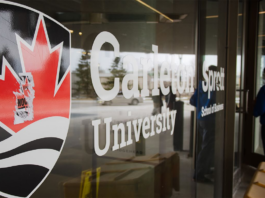Researchers from Carleton have found that the city of Ottawa’s spending on social services has not increased at the same rate as spending in other areas.
Steve Pomeroy and Maude Marquis-Bissonnette, researchers from the Centre for Urban Research and Education (CURE), located at Carleton, published a report analyzing the city of Ottawa’s budgets, from 2009 until now.
The report found that since 2009, Ottawa has reported one of the highest median total incomes of any metropolitan region in Canada.
Yet, according to the report, investment in the areas of community and family services has fallen behind investment in other areas, while the largest increase in city spending has been in protective services.
Pomeroy said in an email that the study began in May and was later revised in June, as more 2015 data became available. They looked at the city’s audited financial statements, as well as its annual budgets.
“From [there] we extracted the past years ‘actual’ versus ‘planned,’ ” Pomeroy said.
The report stated that “community and social services is the only area where there is a notable and steady decline in the share of total tax-based spending.”
According to the report, despite a decrease in crime rates, funding for protective services has continued to increase.
“City council’s support for other municipal responsibilities appears [to] indicate a preference to support protective and recreational services over those seeking to address core issues of poverty,” the report concluded.
According to Pomeroy, the numbers found are “not really surprising as it’s a difficult challenge for [the] city to manage all competing priorities.”
“There is not a broad or strong constituency lobbying for more spending in community services versus broader services like recreation, [and] protective services,” Pomeroy said. “Plus union collective agreements have [an] impact in other areas that force spending based on those agreements.”



